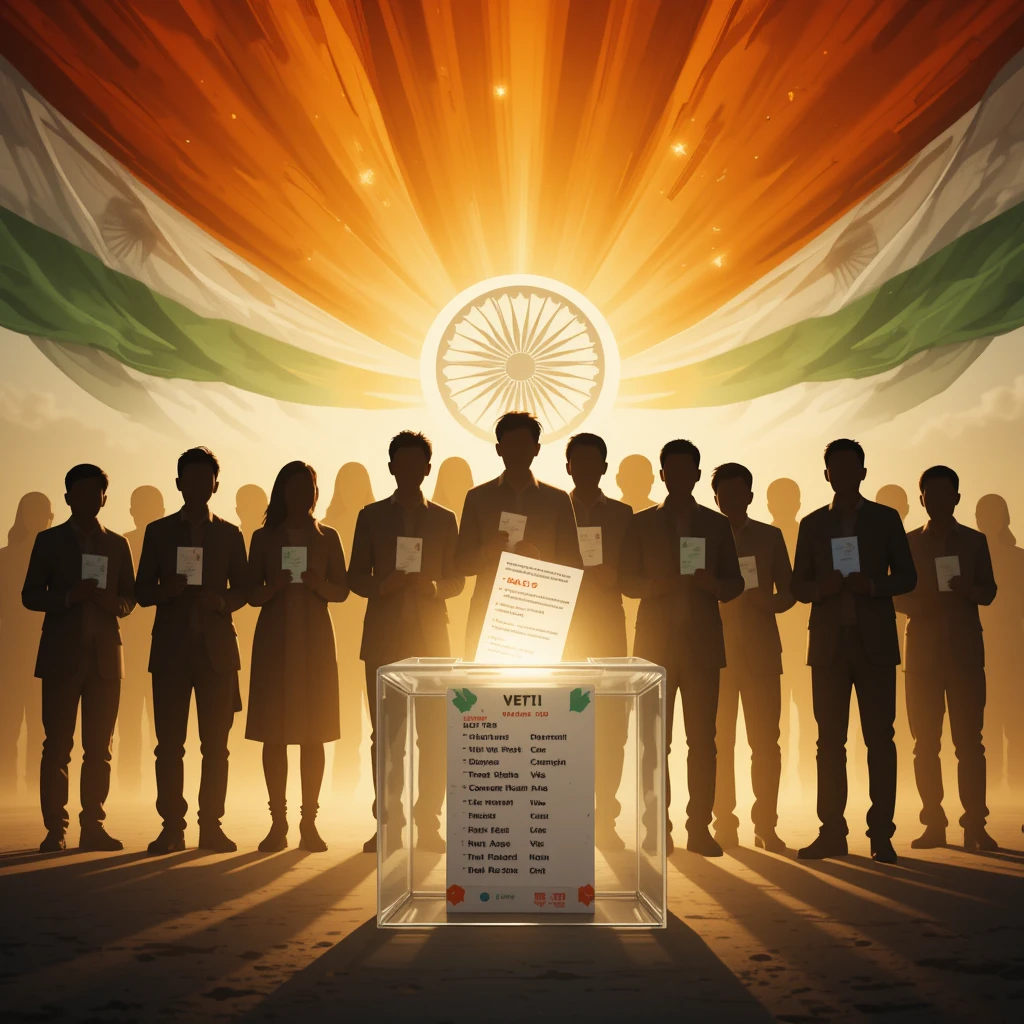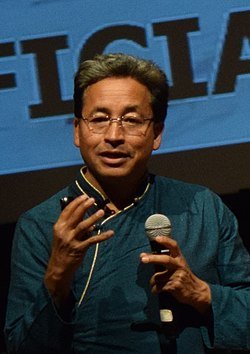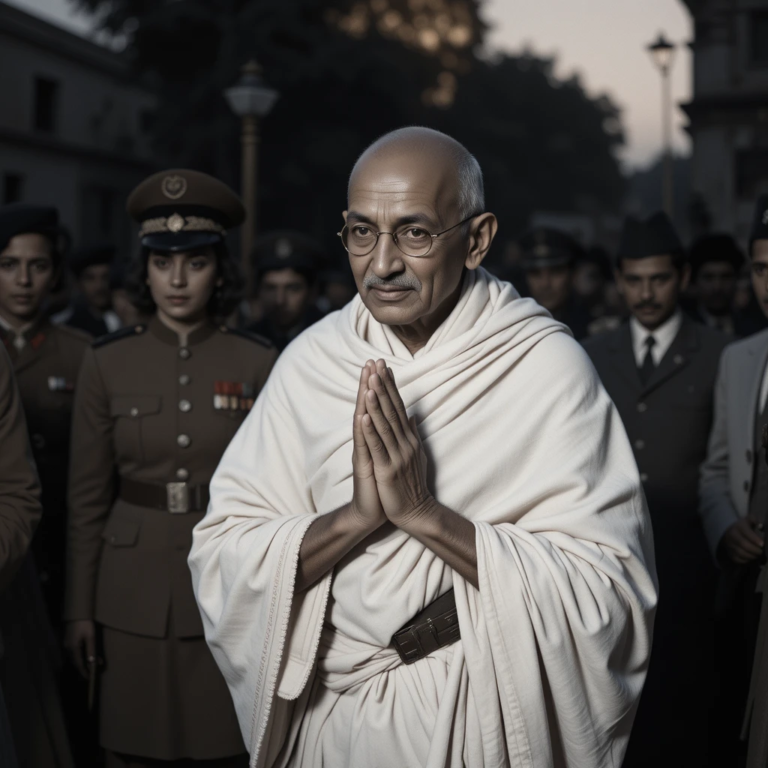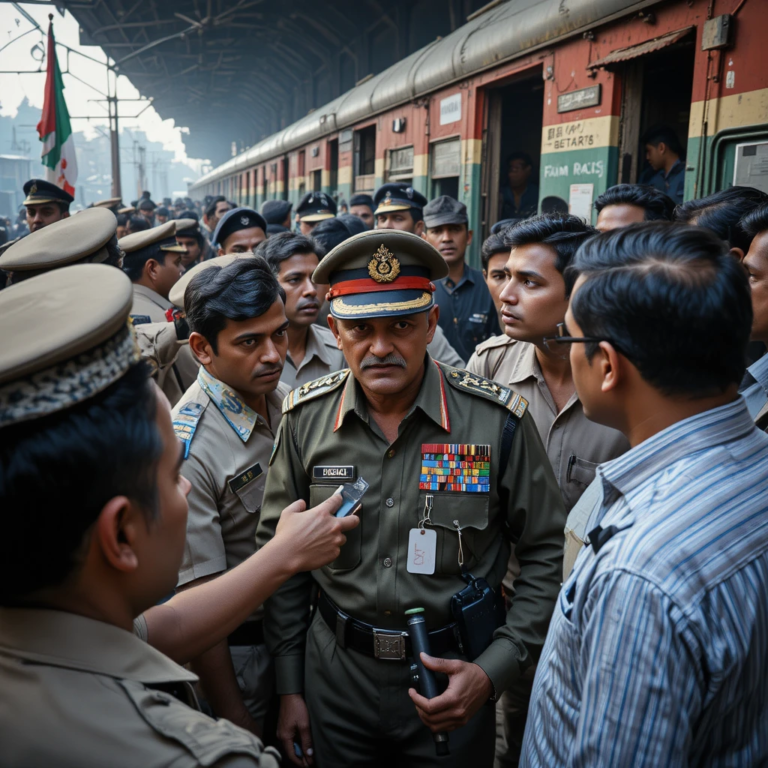Introduction
On August 7, 2025, Rahul Gandhi, Leader of Opposition (LOP) in the Lok Sabha and Congress MP, made explosive allegations of voter list manipulation in the 2024 Lok Sabha elections and subsequent state assembly polls, particularly in Karnataka’s Mahadevapura segment, Uttar Pradesh, Maharashtra, Haryana, and Bihar. Backed by data from the Election Commission of India’s (ECI) electoral rolls, Gandhi highlighted issues like duplicate voter entries (e.g., Aditya Srivastava listed across states with EPIC FPP6437040), invalid addresses (e.g., “house no. 0”), bulk registrations at single addresses, and unexplained voter turnout spikes. The ECI, through state Chief Electoral Officers (CEOs), swiftly denied these claims, labeling them “misleading” and invoking Rule 20(3)(b) of the Registration of Electors Rules, 1960, to demand sworn affidavits from Gandhi. However, independent fact-checking by Mohammed Zubair of Alt News (@zoo_bear on X) and media investigations (e.g., The Hindu, Livemint) have authenticated these discrepancies using ECI’s own rolls, exposing the commission’s denials as inaccurate and raising serious concerns about electoral integrity. This expanded article delves into verified evidence, dissects the ECI’s response, explores the causes and implications of these lapses, and proposes solutions to safeguard India’s democratic process.
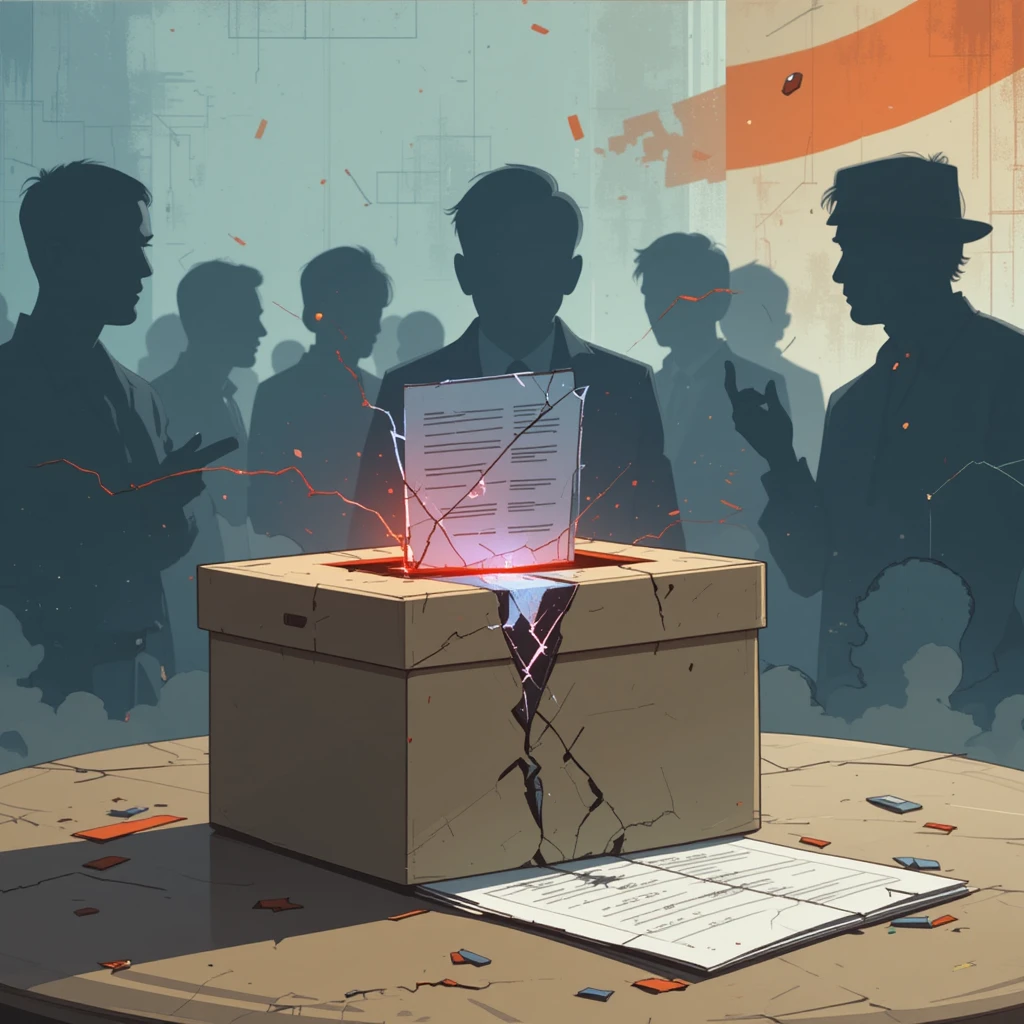
Table of Contents
Authenticated Evidence from ECI Electoral Rolls
Rahul Gandhi’s allegations, supported by ECI-provided data (screenshots dated March 16, 2025), were verified through official sources, including the ECI’s voters portal (voters.eci.gov.in) and state CEO websites (e.g., ceouttarpradesh.nic.in). Below are the key discrepancies, corroborated by Zubair’s analyses and media reports:

- Duplicate Voter Entries Across Multiple States:
- Aditya Srivastava Case: Gandhi claimed Aditya Srivastava, with EPIC number FPP6437040, was listed in:
- Lucknow East, Uttar Pradesh: Part 84, Serial No. 630 (Draft Roll-2025, published October 29, 2024; Final Roll-2025, published January 7, 2025).
- Jogeshwari East, Maharashtra: Part 197, Serial No. 877.
- Mahadevapura, Karnataka: Part 458, Serial No. 1265, and Part 459, Serial No. 678.
- Mohammed Zubair’s Alt News investigation (August 8, 2025) confirmed these entries by downloading PDFs from ECI portals. His X posts included screen recordings showing Srivastava’s name in Uttar Pradesh’s rolls as late as January 2025, directly contradicting Uttar Pradesh CEO Navdeep Rinwa’s August 7 claim that it appeared only in Karnataka. Zubair also found a secondary EPIC (RXM4728275) for Srivastava in Lucknow East, suggesting unnotified changes.
- Additional Duplicates: Zubair identified other voters, such as Om Prakash Bagri, Saraswati Bagri, and Mala Bagri, with dual EPICs across Karnataka, Uttar Pradesh, and Maharashtra. For example, Om Prakash Bagri appeared in Mahadevapura (Part 460, Serial No. 234) and Varanasi Cantt (Part 112, Serial No. 789). These cases, verified via ECI PDFs, indicate a systemic failure to remove old entries after address updates.
- Aditya Srivastava’s Testimony: In an August 8, 2025, India TV interview, Srivastava confirmed relocating from Lucknow (pre-2016) to Mumbai (2016-2021) to Bengaluru (2021-2024), updating his voter ID via Form 6 each time. He denied voting in multiple states but noted his name persisted in prior rolls, highlighting ECI’s failure to synchronize deletions.
- Aditya Srivastava Case: Gandhi claimed Aditya Srivastava, with EPIC number FPP6437040, was listed in:
- Invalid Addresses (“House No. 0” and Bulk Registrations):
- Gandhi alleged over 40,000 entries in Mahadevapura had non-existent addresses, including thousands with “house no. 0” or single residences listing dozens of unrelated voters. Livemint and The Hindu verified this using ECI rolls, finding 11,965 duplicates, 38,000+ fake addresses, and 6,000+ voters at single homes (e.g., 50+ voters at one apartment). In Uttar Pradesh, while “zero” addresses were not explicitly quantified, similar patterns emerged in Lucknow East and Varanasi Cantt, with voters registered at questionable addresses (e.g., vacant plots or single homes with 20+ names).
- Zubair’s analysis noted bulk registrations in Uttar Pradesh, such as 15 voters with different surnames at one address in Lucknow East (Part 85, Serial Nos. 200-215), suggesting lax verification. The Hindu’s ground checks in Mahadevapura confirmed some “zero” addresses as placeholders for unregistered flats, but others were outright invalid.
- Unexplained Voter Turnout and Additions:
- Gandhi pointed to a 41-lakh voter increase in Maharashtra between Lok Sabha (April 2024) and Assembly polls (November 2024), with a 7.83% turnout spike (58.22% to 66.05%). ECI rolls and ADR reports confirmed this, noting urban constituencies like Mahadevapura and Mumbai’s Jogeshwari East showed similar spikes (e.g., 10% in Karnataka). In Uttar Pradesh, Varanasi Cantt’s rolls grew by 1.2 lakh voters in six months, unexplained beyond “youth registrations.”
- These spikes, coupled with duplicates, fueled suspicions of manipulation, though the ECI attributed them to legitimate drives. Independent analyses (e.g., Economic Times) noted urban mobility and weak verification as contributors.
- Access to ECI Data:
- The ECI provides electoral rolls as searchable PDFs on voters.eci.gov.in and state portals (e.g., ceouttarpradesh.nic.in/ERollpdf/ERoll.aspx), downloadable by selecting district, constituency, and part number. Zubair’s X tutorials (August 8-9, 2025) demonstrated how to access Draft Roll-2025 (October 29, 2024) and Final Roll-2025 (January 7, 2025), confirming Gandhi’s data. However, these PDFs are not machine-readable (e.g., CSV/Excel), hindering rapid analysis. Congress’s June 2025 request for structured data was rejected by the ECI, citing a 2018 Supreme Court ruling (Ashwini Kumar Upadhyay vs Union) that upheld PDFs to balance transparency and privacy. Paper copies are also provided to parties at booths, but their volume (e.g., thousands of pages per constituency) makes manual checks impractical.
ECI’s Denials: Misleading and Inconsistent
The ECI, via state CEOs, issued rebuttals on August 7-8, 2025, claiming:
- Aditya Srivastava and Vishal Singh (EPIC INB2722288) were listed only in Karnataka (Mahadevapura, Booth 458, Part 1265 for Srivastava; Booth 513, Part 926 for Singh), not Uttar Pradesh or Maharashtra.
- A search on voters.eci.gov.in showed “no result found” for these names in Uttar Pradesh/Maharashtra.
- Discrepancies were resolved in a March 2025 verification drive, ensuring a 97% accurate 99-crore voter database.
- Gandhi’s claims were “misleading” and required affidavits under Rule 20(3)(b) to trigger formal inquiries.
These denials were debunked as misleading:
- Contradictory Evidence: Zubair’s analysis, using ECI’s Draft and Final Rolls-2025, confirmed Srivastava and Singh in Uttar Pradesh (Lucknow East, Varanasi Cantt) and Maharashtra (Jogeshwari East) until January 2025. The CEO’s reliance on a current website search ignored historical rolls, suggesting retroactive corrections post-allegation without disclosure.
- Inconsistent Details: Uttar Pradesh’s CEO claimed Srivastava’s father was “S P Srivastava,” but rolls listed “Rithika Srivastava” as the relative. A secondary EPIC (RXM4728275) for Srivastava in Lucknow East indicated unnotified changes, undermining the ECI’s claim of transparency.
- Media Errors Amplified: Outlets like Aaj Tak and News18 India, cited by BJP leaders (e.g., Ravi Shankar Prasad), conducted “live fact-checks” that failed to find Srivastava’s name due to incorrect portal usage or incomplete search parameters. Zubair’s tutorials exposed these flaws, showing the data was accessible on ECI sites.
- ECI’s Evasive Response: The ECI’s X posts (August 7, 2025) labeled Gandhi’s claims “baseless” but offered no explanation for why duplicates persisted until January 2025. The March 2025 cleanup claim was vague, lacking details on corrected entries or affected constituencies. Only 89 correction appeals were reported for Maharashtra’s 2024 polls, suggesting underreporting.
Legal Context: ECI’s Affidavit Demand
The ECI invoked Rule 20(3)(b) of the Registration of Electors Rules, 1960, which states:
“The registration officer may, if he thinks fit, require that the testimony of any person giving evidence before him shall be given on oath and may administer oath to him for the purpose.”
- This allows Electoral Registration Officers (EROs) to demand sworn declarations for claims/objections on voter rolls (e.g., via Forms 6-8). The ECI treated Gandhi’s allegations as a formal “claim,” demanding specifics (names, serial numbers, part numbers) under oath, with warnings of penalties under Section 227 of the Bharatiya Nyaya Sanhita, 2023 (up to 7 years for false evidence) and Section 31 of the Representation of the People Act, 1950 (up to 1 year for false declarations).
- Validity: The demand is legally sound but unconventional, as Rule 20 typically applies to routine roll revisions, not post-election public exposés by the LOP. Gandhi argued his parliamentary oath (Article 99) and public statements suffice, accusing the ECI of deflecting. Legal experts (e.g., NDTV op-eds) call it “overreach,” as no formal inquiry under Rule 19 (notice of claims) was initiated first. If challenged, courts may uphold the ECI’s authority but question its application to silence criticism.
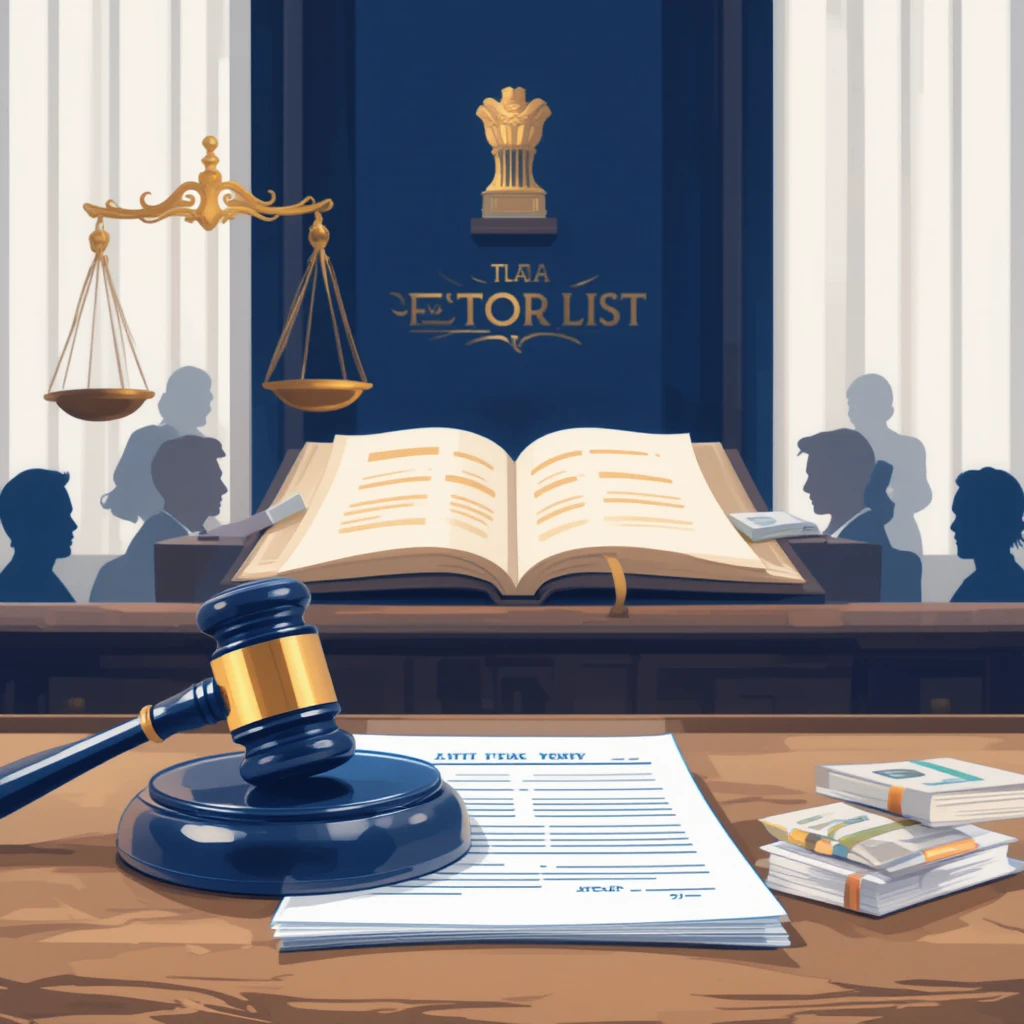
Causes of Voter List Discrepancies
The ECI, under Article 324 and the Representation of the People Act, 1950 (Sections 21-32), is responsible for maintaining accurate rolls through annual revisions, BLO verifications, and party consultations. Discrepancies arise from:
- Administrative Lapses:
- Unreported Changes: High urban mobility (e.g., Mahadevapura’s tech workforce) leads to unreported migrations/deaths. BLOs, covering ~1,200 voters each, often miss updates.
- Software Glitches: The Electoral Roll Management System (ERMS) fails to sync address changes across states, as seen in Srivastava’s case.
- Data Entry Errors: “House no. 0” or blank addresses result from incomplete Form 6 submissions or unverified bulk applications.
- Potential Fraud:
- Bogus Registrations: Bulk Form 6 filings with fake addresses/documents, possibly by local officials or party workers. Examples include 50+ voters at one address or invalid plots.
- Photo Mismatches: Cases like Kamal Nath’s 2018 MP petition noted same photos for multiple voters, suggesting deliberate padding.
- Systemic Gaps:
- No Aadhaar Linkage: A 2015 Supreme Court ruling barred mandatory Aadhaar integration for privacy, limiting duplicate detection.
- Short CCTV Retention: ECI retains booth footage for 45 days unless challenged, hindering post-poll audits.
- Manual Processes: Over-reliance on self-declarations and paper-based verifications delays corrections.
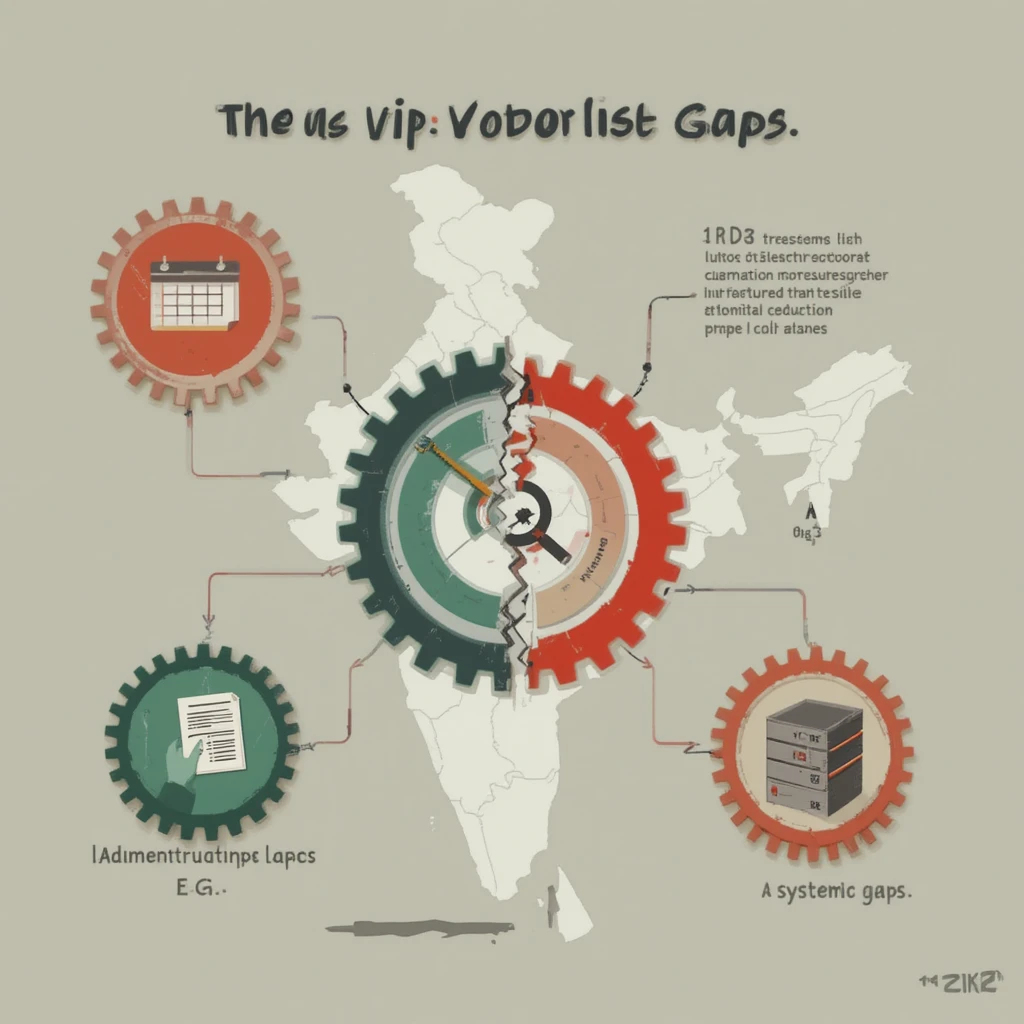
ECI’s Role and Accountability
The ECI’s constitutional mandate (Articles 324-329) requires “superintendence, direction, and control” of elections. Failures in this case include:
- Delayed Corrections: Duplicates persisted until January 2025, despite a claimed March 2025 cleanup.
- Opaque Processes: The ECI provided no breakdown of corrected entries or disciplinary actions against errant officials (e.g., BLOs/EROs). Past cases (e.g., 2024 UP suspensions) show accountability is rare.
- Resistance to Digital Formats: Rejecting machine-readable rolls (per 2018 SC ruling) limits transparency. PDFs, while accessible, are cumbersome for large-scale analysis.
- Perceived Bias: The 2023 CEC Appointment Act, where the PM and a nominated minister outvote the LOP (Gandhi), fuels allegations of ECI-BJP collusion, especially given CEC Rajiv Kumar’s 2022 appointment under a similar process.

Implications for India’s Democracy
The authenticated discrepancies—duplicates, invalid addresses, and turnout spikes—threaten electoral integrity:
- Erosion of Trust: Persistent errors, coupled with misleading ECI denials, fuel public skepticism, as seen in opposition protests (e.g., Mamata Banerjee’s August 9, 2025, Kolkata rally).
- Potential Manipulation: A 5-10% error rate (per ADR) could sway close races, as seen in Maharashtra’s 2024 Assembly polls (e.g., 48 seats with <5% margins).
- Legal Ramifications: Unresolved issues may prompt Supreme Court petitions, as in 2018 (Kamal Nath vs ECI), which dismissed similar claims but ordered stricter verifications.

Proposed Solutions
To restore trust and prevent future discrepancies:
- Machine-Readable Rolls: Mandate CSV/Excel formats with anonymized data to enable rapid analysis, addressing privacy via encryption.
- Independent Audits: Engage third parties (e.g., ADR, IITs) to verify rolls, as suggested by electoral reform panels.
- Aadhaar Integration: Revisit voluntary Aadhaar linkage with robust safeguards, per 2015 SC guidelines.
- Extended CCTV Retention: Increase footage retention to 6 months for post-poll audits.
- Judicial Oversight: Supreme Court monitoring of ECI processes, as in Anoop Baranwal vs Union (2023), to ensure impartiality.
- Automated Deletion: Implement ERMS upgrades to auto-remove old entries upon address updates.

Conclusion
The voter list discrepancies exposed by Rahul Gandhi, verified by Alt News and media using ECI’s own Draft and Final Rolls-2025, reveal systemic failures in India’s electoral process. Duplicate entries like Aditya Srivastava’s, invalid “house no. 0” addresses, and unexplained voter spikes persisted despite ECI’s claims of a 97% accurate database. The commission’s misleading denials—contradicted by accessible roll data—and resistance to machine-readable formats undermine its constitutional mandate under Article 324. While administrative errors are plausible, the ECI’s evasive response and perceived bias fuel suspicions of deeper issues. As India’s democracy depends on fair elections, urgent reforms, including digital transparency, independent audits, and judicial oversight, are critical to ensure no vote is stolen or silenced.
